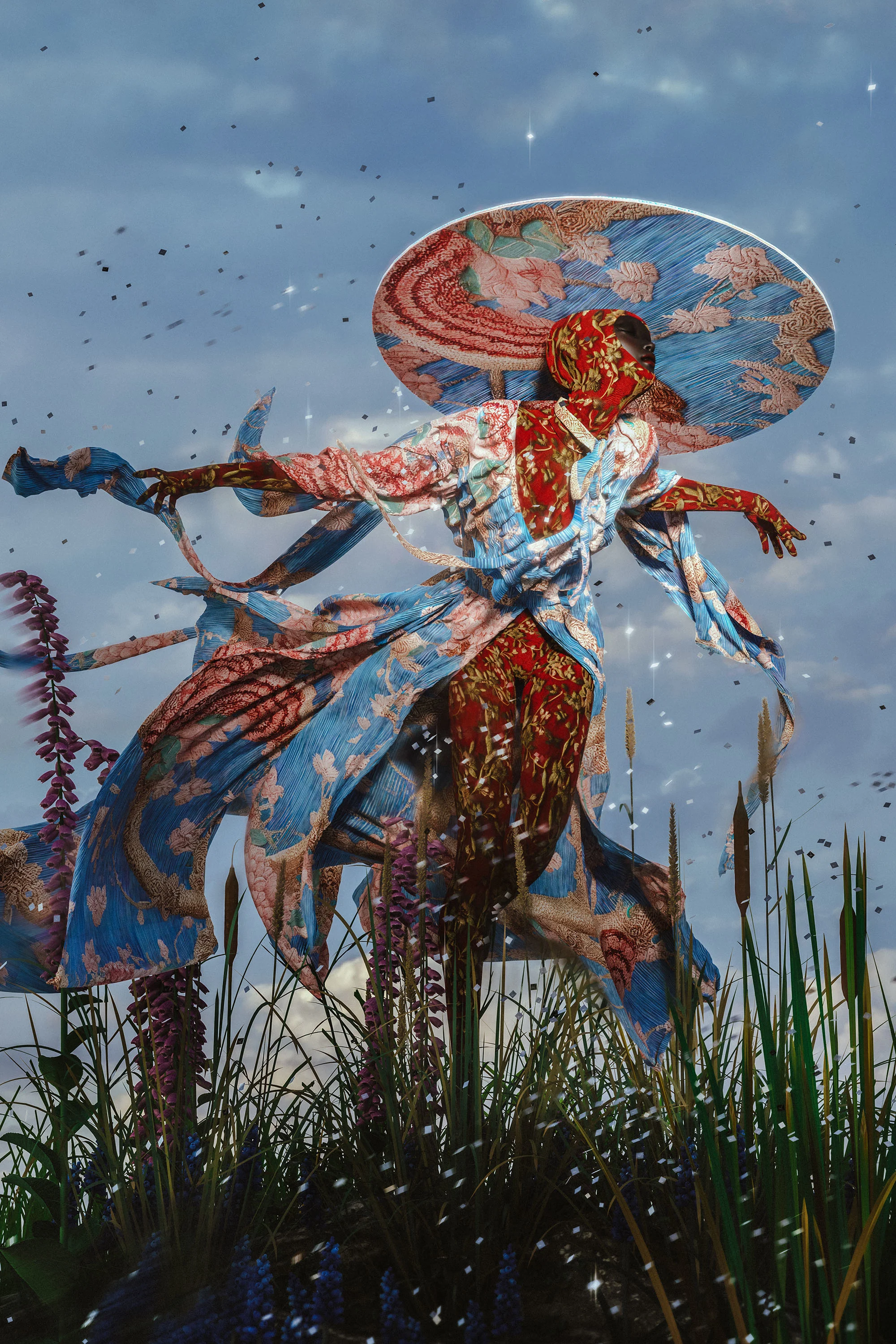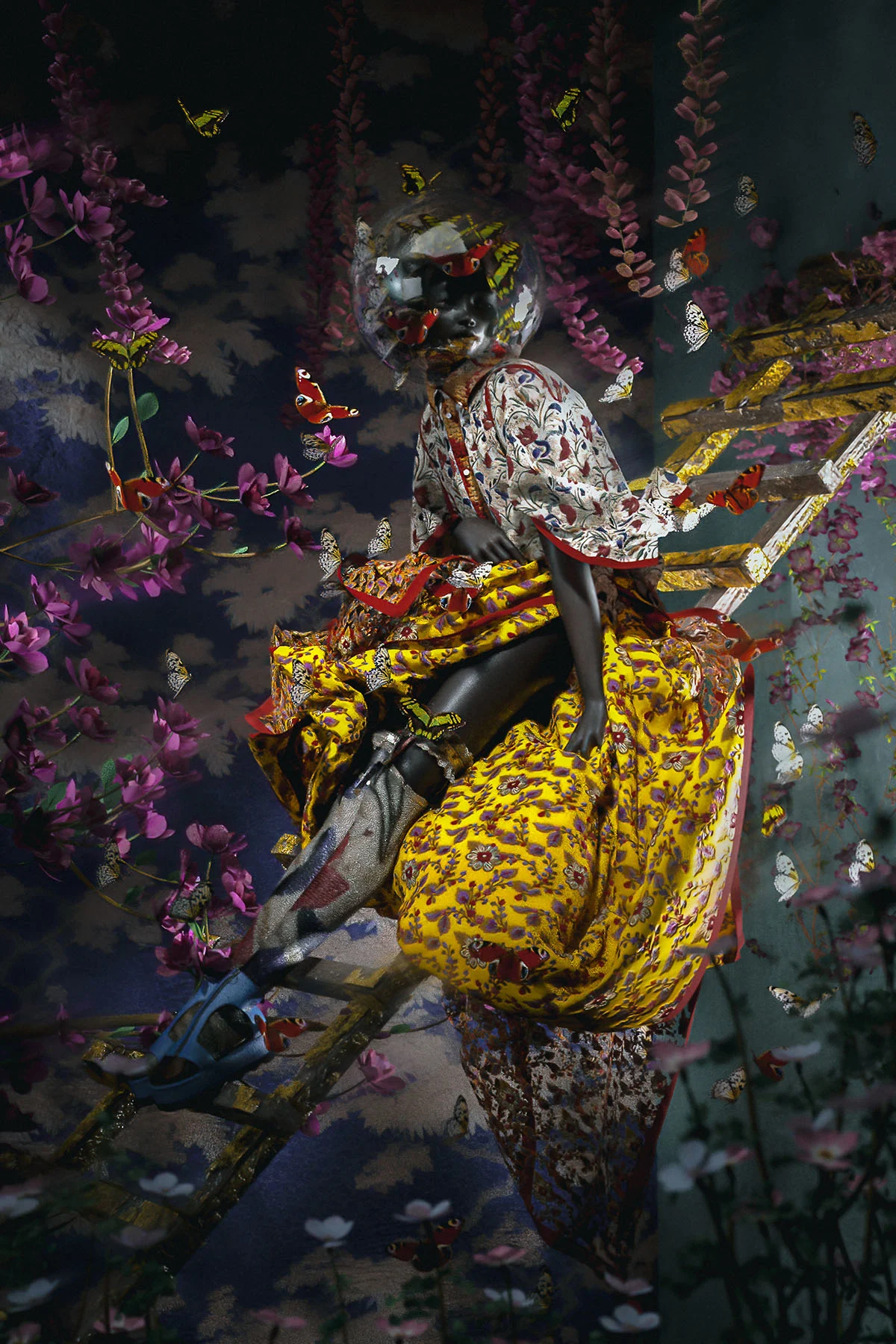Community-driven web3 platform SYKY is looking to expedite the digital revolution in the stubbornly traditional fashion industry. This year, they announced their first collective; offering 10 carefully selected digital designers a year-long program of education, mentorship and unparalleled opportunity. Here, we introduce you to six members of the collective, showing you the work they’ve created, and immersing you in each of their unique creative worlds.
Over the past year, we’ve collectively watched as the worlds of art, finance and media were torn apart and rebuilt from the ground up, block(chain) by block. From the great NFT boom to the burgeoning crypto market, the metaverse and web3, industries are undergoing revolutions unlike anything seen before. Markets and consumers are wrestling free from the grip of traditional formats and reimagining what it means to trade and connect. But there’s someone missing. A trillion dollar industry stuck in the waiting room of the zoom call. What’s happened to fashion’s digital revolution? While select houses like Balenciaga and Gucci keenly push the boundaries of digital integration, the majority of brands still feel a bit stuck in, well, reality.
It’s no surprise. Fashion is a famously stubborn industry, from rigid (and often wasteful) production lines to age-old advertising formats. And when having the right connections or the right degree matters so much, the people who are comfortably inside are understandably hesitant to shake things up. But this year a group of pioneering industry insiders are doing just that.
SYKY is a community-driven blockchain-enabled platform standing proudly at the forefront of fashion’s digital revolution. Led by former-Chief Digital & Content Officer at Ralph Lauren and Global Director of Digital & Social at Burberry Alice Delahunt, SYKY (pronounced psy-key) is combining traditional fashion expertise and visionary innovation. The goal? To expand possibilities in the industry, both creatively and culturally. Entering the lush online world of syky.com, keystone-holding members can access collections, attend virtual runway shows and connect to a diverse community of creators. But the ambition doesn’t stop there, and in Spring of this year SYKY officially announced The SYKY Collective.
This luxury fashion incubator offers 10 digital (or "phy-gital" meaning physical and digital) designers a year-long program of education, mentorship and unparalleled opportunity. From an open call which drew responses from over 29 countries, industry figures from the likes of the British Fashion Council, Calvin Klein and Vogue selected the lucky 10 designers. There’s no mincing of words here. Those chosen today are tipped to contend with major fashion houses tomorrow, disrupting traditional structures and bringing physical and digital technologies together in a way that will make them key players. As they reach the middle point of the program, we caught up with 6 of the SYKY Collective to discuss what drives them, the joys of creating digitally, and why the fashion industry is ripe for revolution.
Fanrui Sun, China
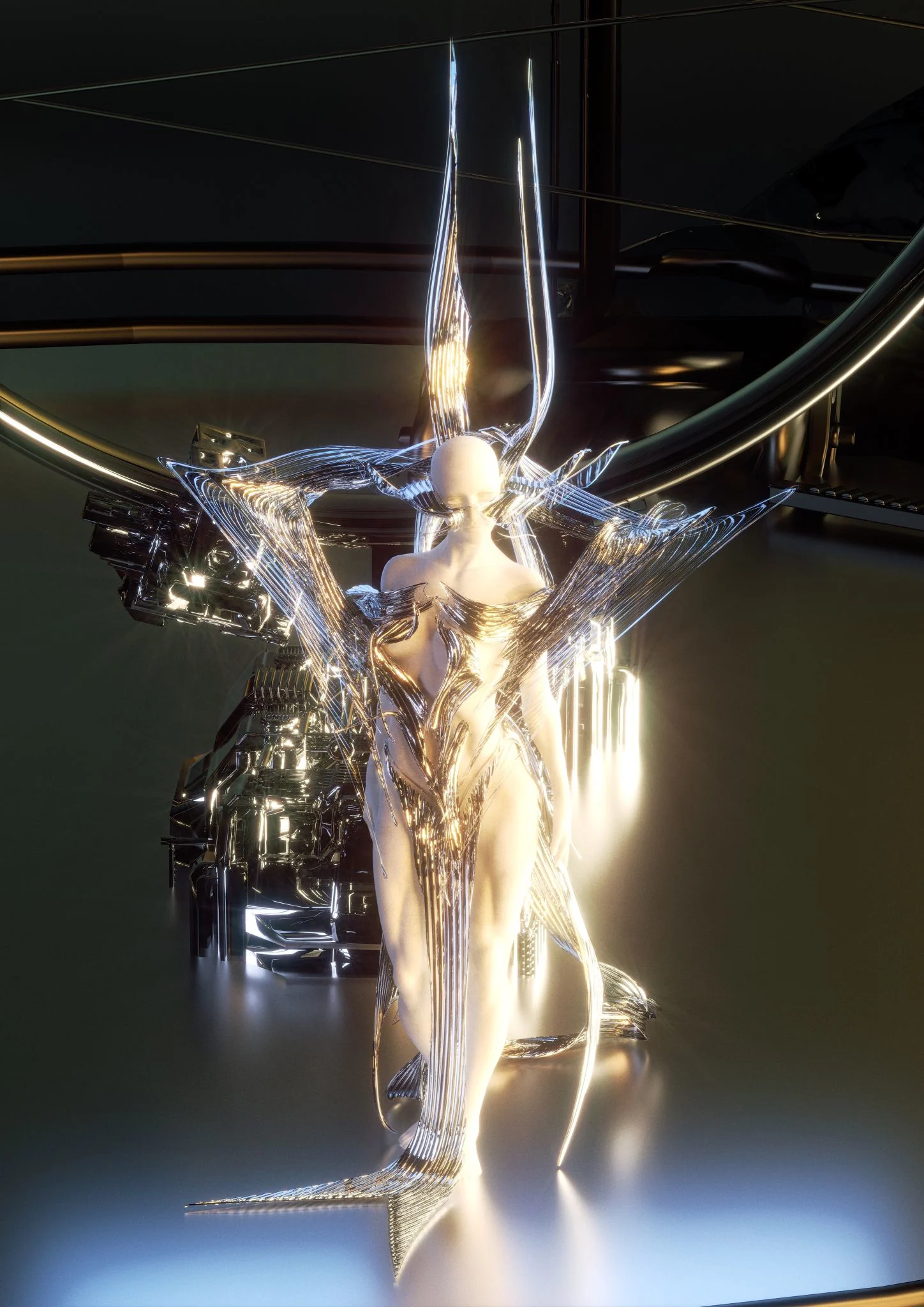
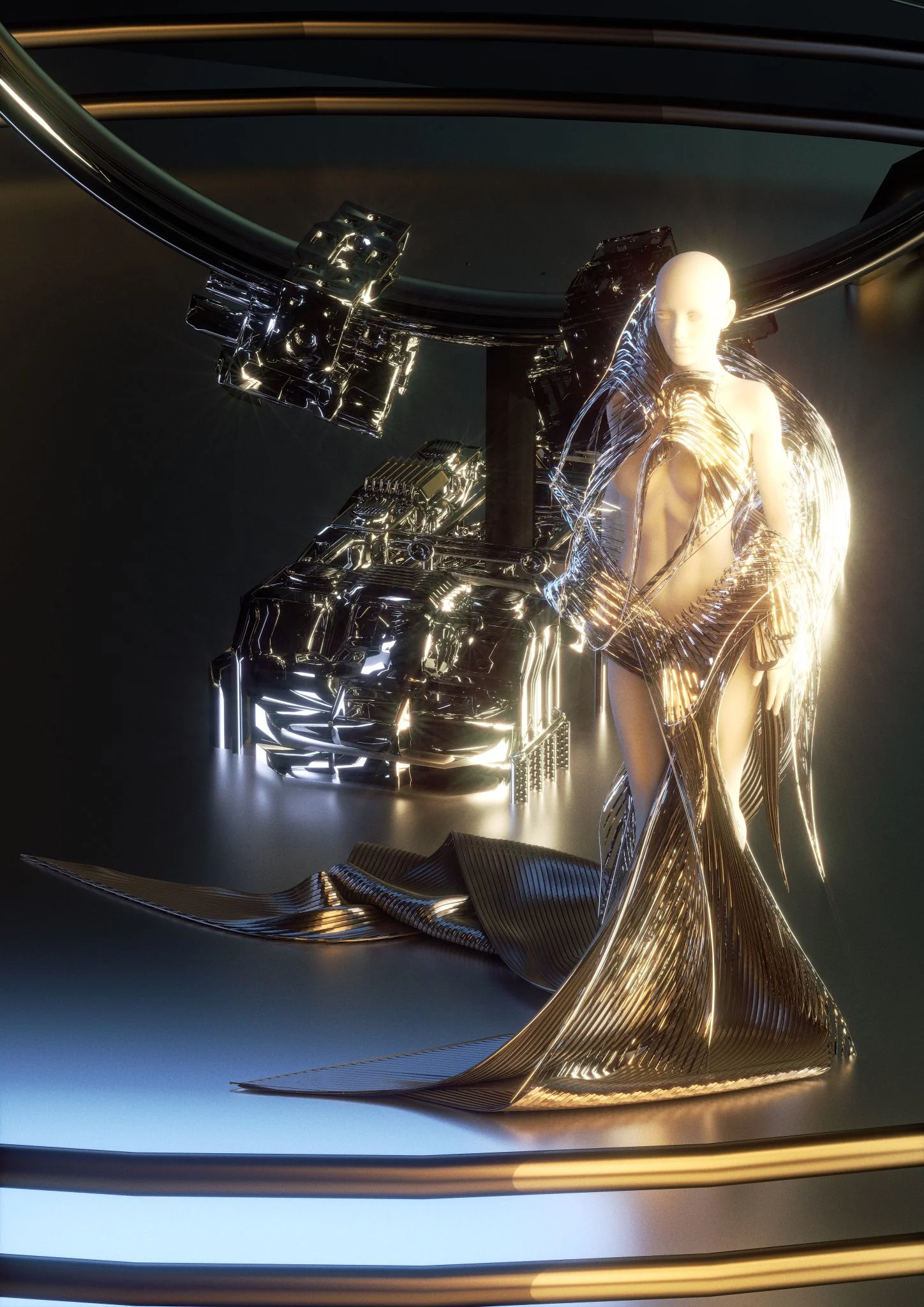
Using AR, VR and 3D printing, Chinese digital artist and designer Fanrui Sun draws on an exhaustive set of technologies to create her work. Visually inspired by diverse influences including algorithms and marine life, her otherworldly aesthetic, crafted through these techniques, is defined by the tension between natural and digital forms. Fanrui was drawn to design at an early age out of a deep love of Dungeons & Dragons. "Buying skin gear, props, and costumes in games not only gave characters different looks and attributes but also created an early sense of clothing and identity amongst players - a sense of community."
The pieces Fanrui presents as part of her work with the SYKY Collective demonstrate an impeccable technicality and her natural skill as a designer, but equally her vision as an artist. The silver garments melt into the gleaming silver of abstracted machines, creating shapes which are both recognizably human yet entirely mechanized. “The project was based on virtual influencers,” Fanrui explains. “Aided by CGI technology, virtual humans are trying to be closer to real humans. They have near-real appearances, perfect figures, vivid personalities, advanced ideas, and even social relationships. I used 3D technology to study the deformation and flow of the human body, and explore the flowing relationship between virtual and real humans.” A fashion Masters student at the Royal College of Art in London, Fanrui’s work challenges the boundaries of both digital fashion and art, rejecting tradition across all fronts.
Pet Liger, Cyprus
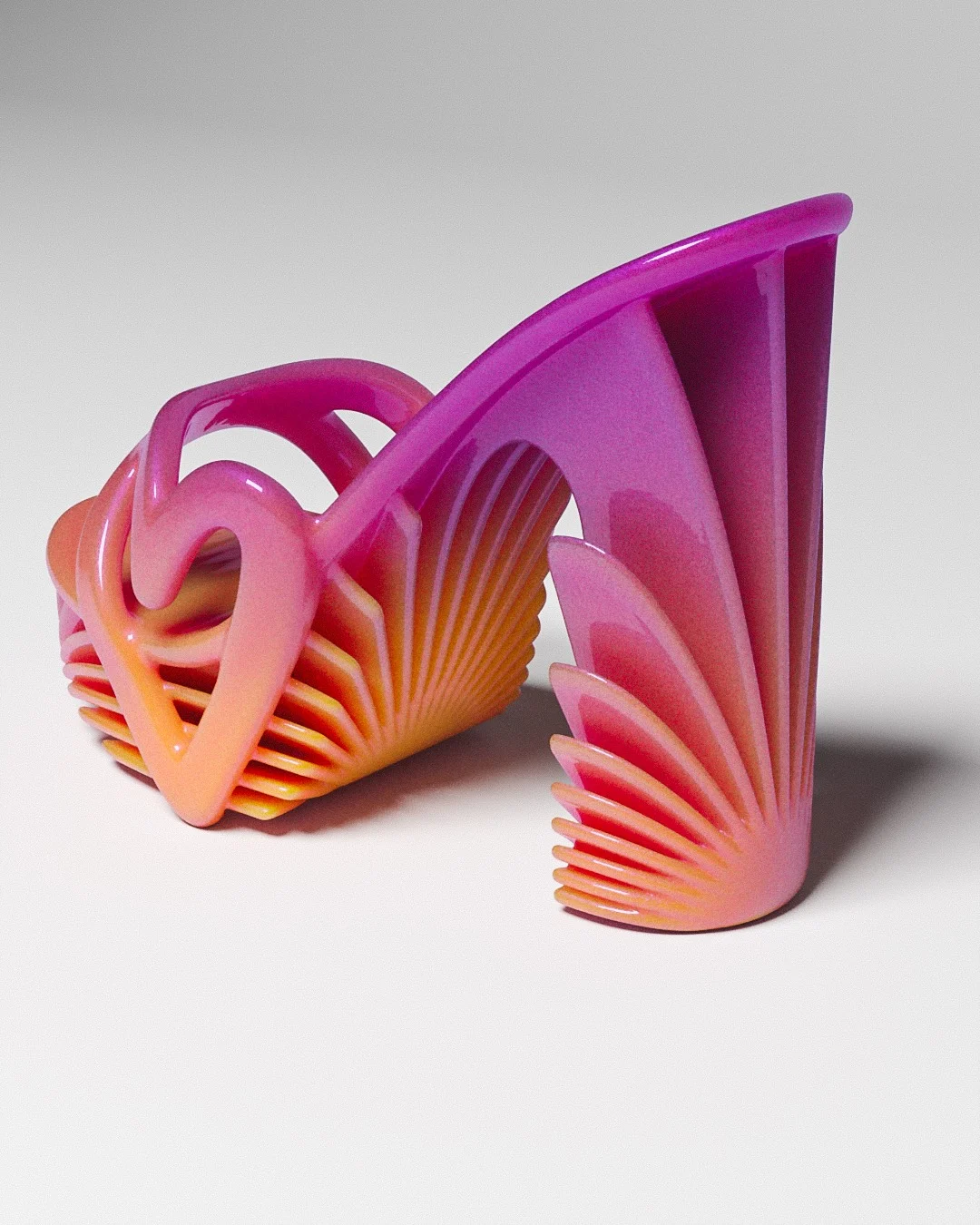
There’s some symbols that transcend cultural and societal barriers—the heart shape is a perfect example of that.
You’d be forgiven while admiring the smooth, sleek creations of Pet Liger, for assuming their designs were photographs. Founder and Creative Director Constantinos Panayiotou lives for the blurred lines. He chooses to describe their practice as ‘hyper-real footwear,’ explaining that “people don’t tend to think of digital things as real, but we definitely all behave as though they are. At Pet Liger we see reality as a much bigger experience, encompassing the digital and physical plus everything else in-between.” As a luxury on-chain fashion house Pet Liger have collaborated in the purely digital space with mega heritage brands including Gucci, and are now setting their sights on an integrated physical and digital output.
The designs they are showing with the SYKY Collective are variations on a classic Pet Liger motif: the heart. “There’s something truly universal about certain symbols, that transcend cultural and societal barriers—the heart shape is a perfect example of that.” At once simple and iconic, this heart heel silhouette, recently reposted by Cosmopolitan Magazine, was designed for Valentine’s Day last year and became an instant classic, leading to further iterations. The colors shown here call to mind candy ribbons and Tequila Sunrise, a direction confirmed by Constantinos—“I’m heavily influenced and inspired by food, if it looks good enough to eat then it’s definitely good enough to wear!” We can only dream of what they might taste like.
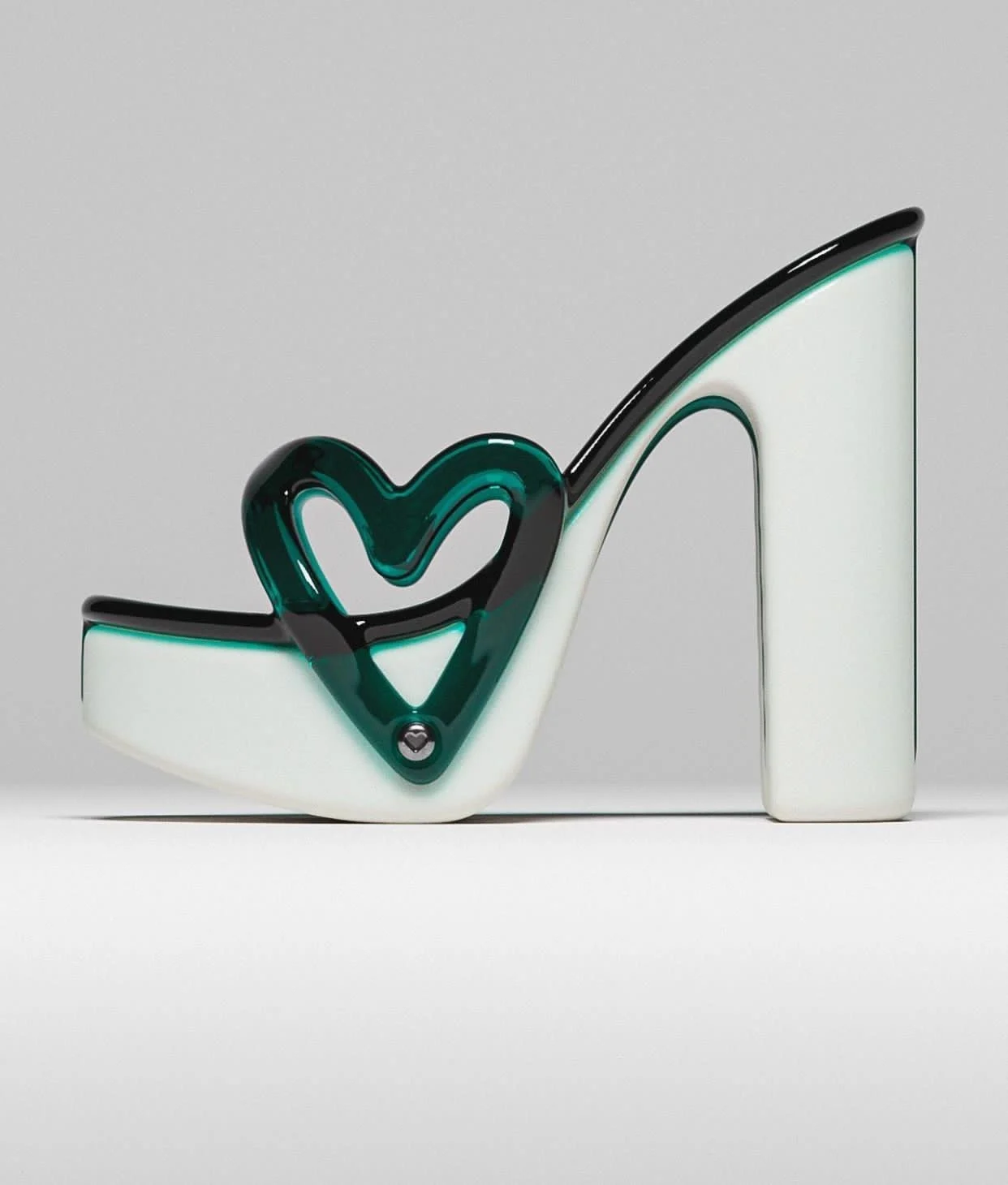

Jacqueline Jade, US
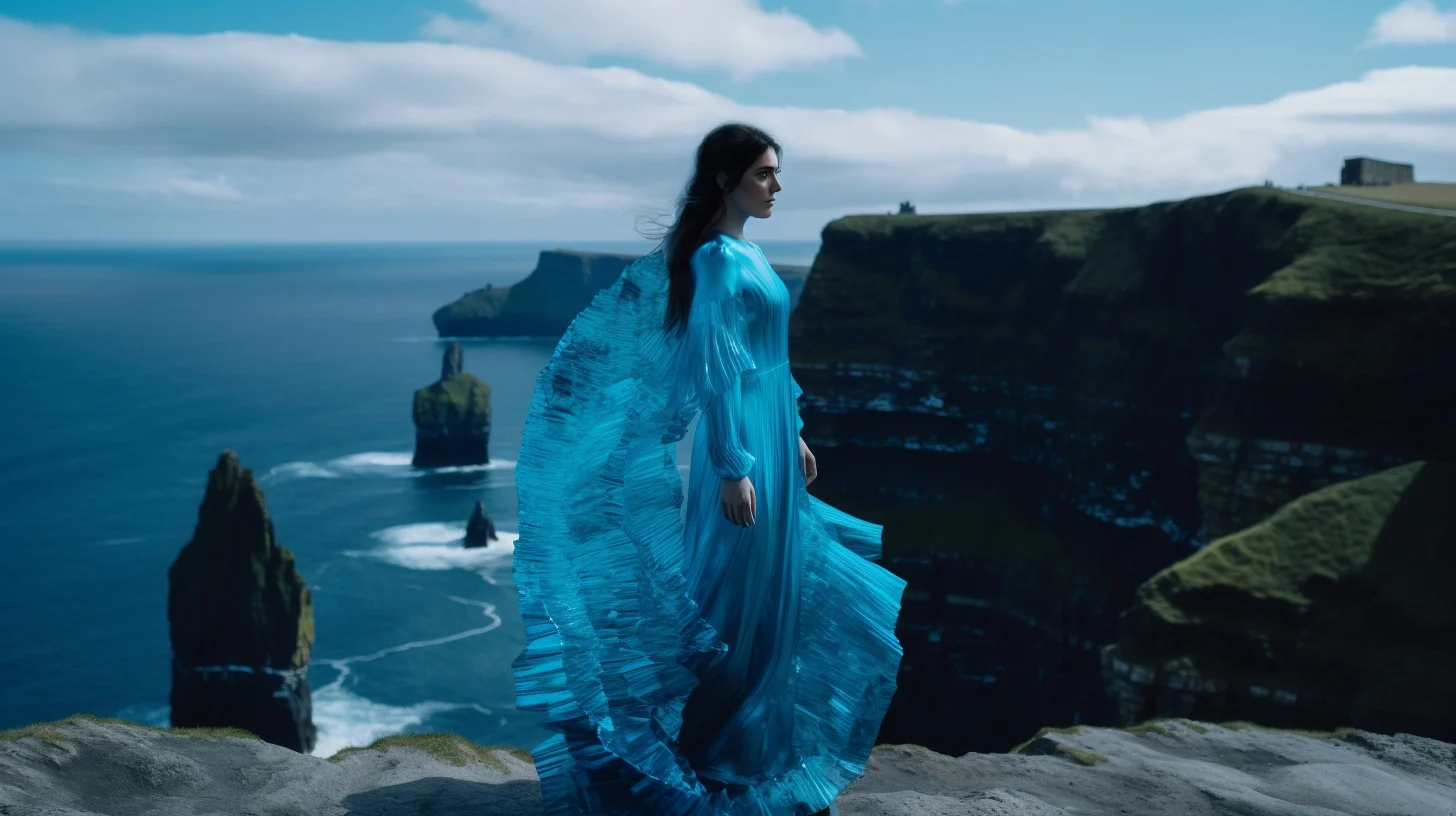
Jacqueline Jade's experience in the field of technology includes roles in augmented reality content strategy at Silicon Valley titans including Meta and Snap. This unwavering interest in how tech can elevate everyday experiences led Jacqueline to discover her own artistic vision. “Digital tools enable me to create textures and fabrics that don't exist in the physical world, for example, a piece designed to look like moving water,” she says. Her work brings together atmospheric natural landscapes with flowing garments that ripple with color and movement. After showing art pieces in several galleries, she channeled her creative energy into Embodi, a digital fashion house which uses Al and 3D tools to craft impossibly elegant pieces, with infinite aesthetic potential.
In her work, Jacqueline builds a bridge between humanity and wild and untamed nature. There is no irony lost here that it is in fact technology that holds the power to draw the viewer back into the real world. “One downside of technology is that it can remove people from time spent in nature,” she explains, “I don't believe that it has to be this way. I strive to make digital feel organic and natural.” In the pieces shown here she explains are primarily "inspired by natural landscapes," Jacqueline prompts us to imagine what it would feel like to be able to wear a piece of the ocean or the sky.

Nextberries, Nigeria
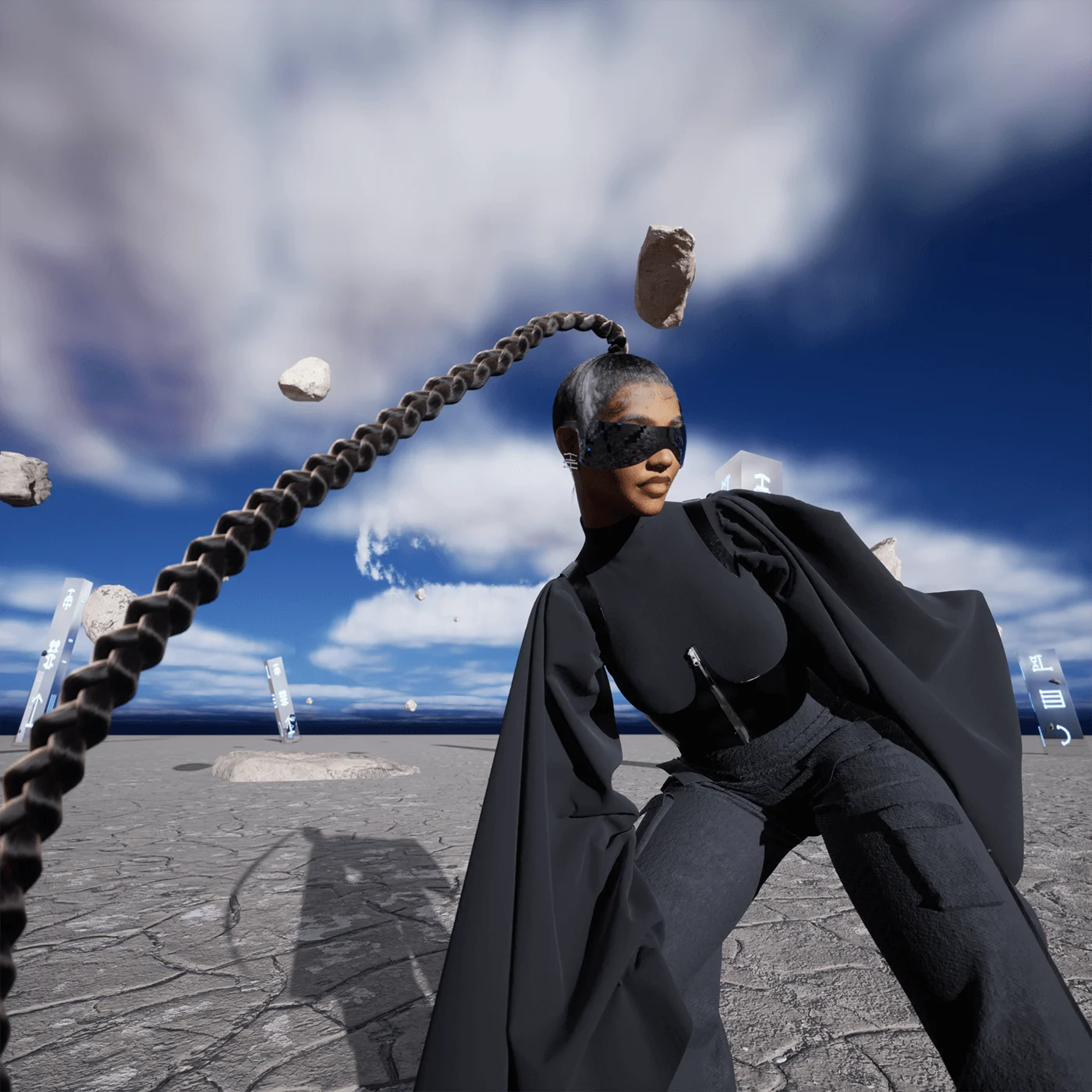
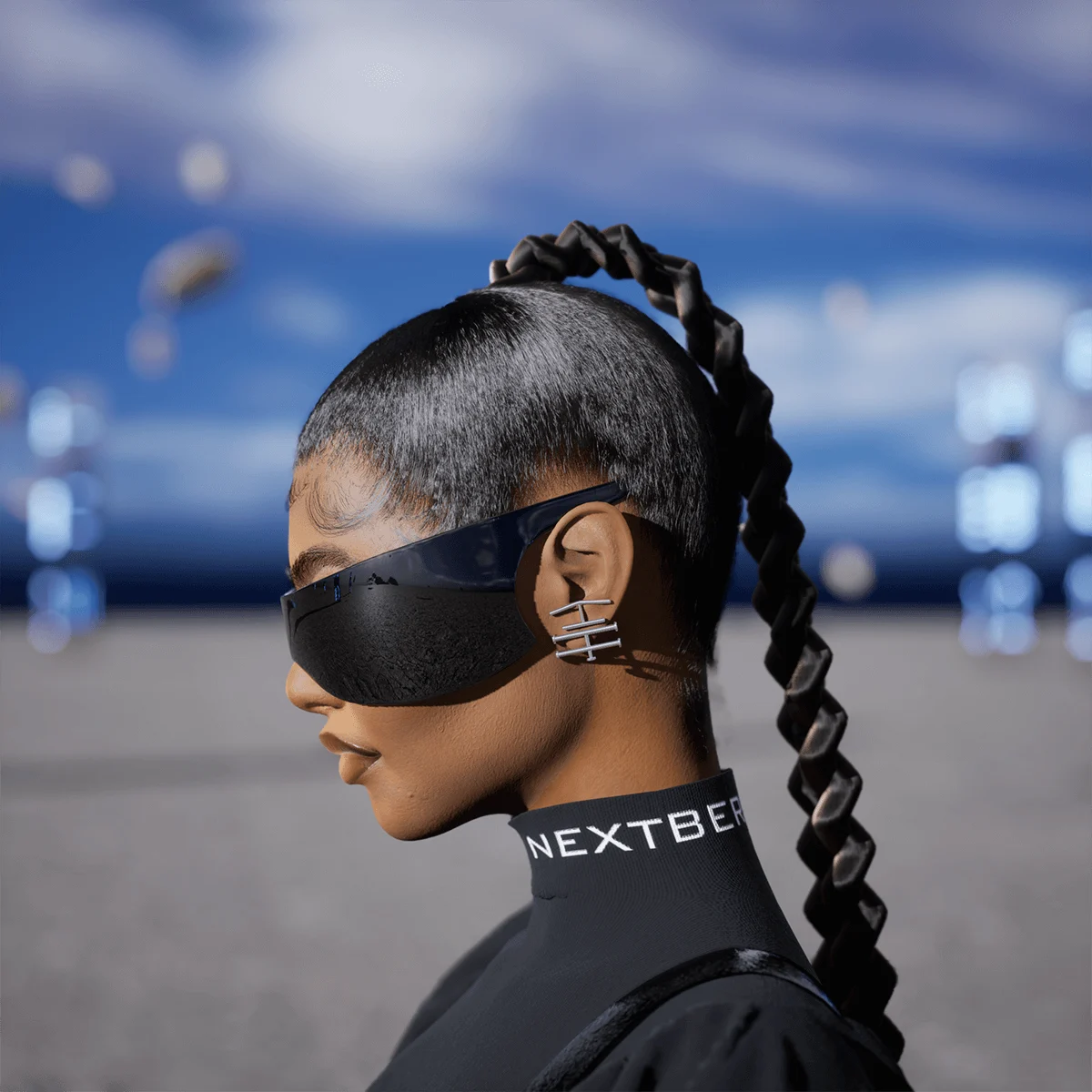
Inspired by a combination of traditional Nigerian design and fluid, digital techniques, Luxury fashion house Nextberries have their sights set on establishing a whole new dimension of fashion. “The digital realm offers us unparalleled precision and efficiency,” co-founder Oluchi Nwachukwu says, stating their goal to reduce waste and foster sustainability which are “major critical concerns for todays’ socially conscious consumers.” The pair hope to solve age-old problems with web3 solutions: using blockchain technology to trace supply chains and ensure ethical production practices, for example.
A “phygital” fall/winter showcase in Paris earlier this year saw a digital installation supported by physical designs, and celebrity fans including Erykah Badu are already catching on. With a future-nostalgia aesthetic to their work, the monochrome pieces they present here bring together 90s R&B styling with cuts that appear endless, redefining the edges of the human body. “We’re from the eastern part of Nigeria, and are deeply connected to our roots,” explains co-founder Adaku Stephanie Emenike, “each design carries a piece of our history and a message waiting to be decoded.” As a whole, what they create extends beyond aesthetics, imagining pieces that become worlds rich with storytelling.

Calvyn Justus, South Africa
A background as an Olympic swimmer, photographer and model lends South African artist Calvyn Justus insight to elite and ultra-competitive spaces, from somewhat of an outsider’s perspective. Now based in LA, Calvyn used downtime from swimming during lockdown to teach himself 3D techniques. He explains how, with digital design, “being able to experiment and practice as much as you like and wherever you like makes the production of an outfit seem far less intimidating.”
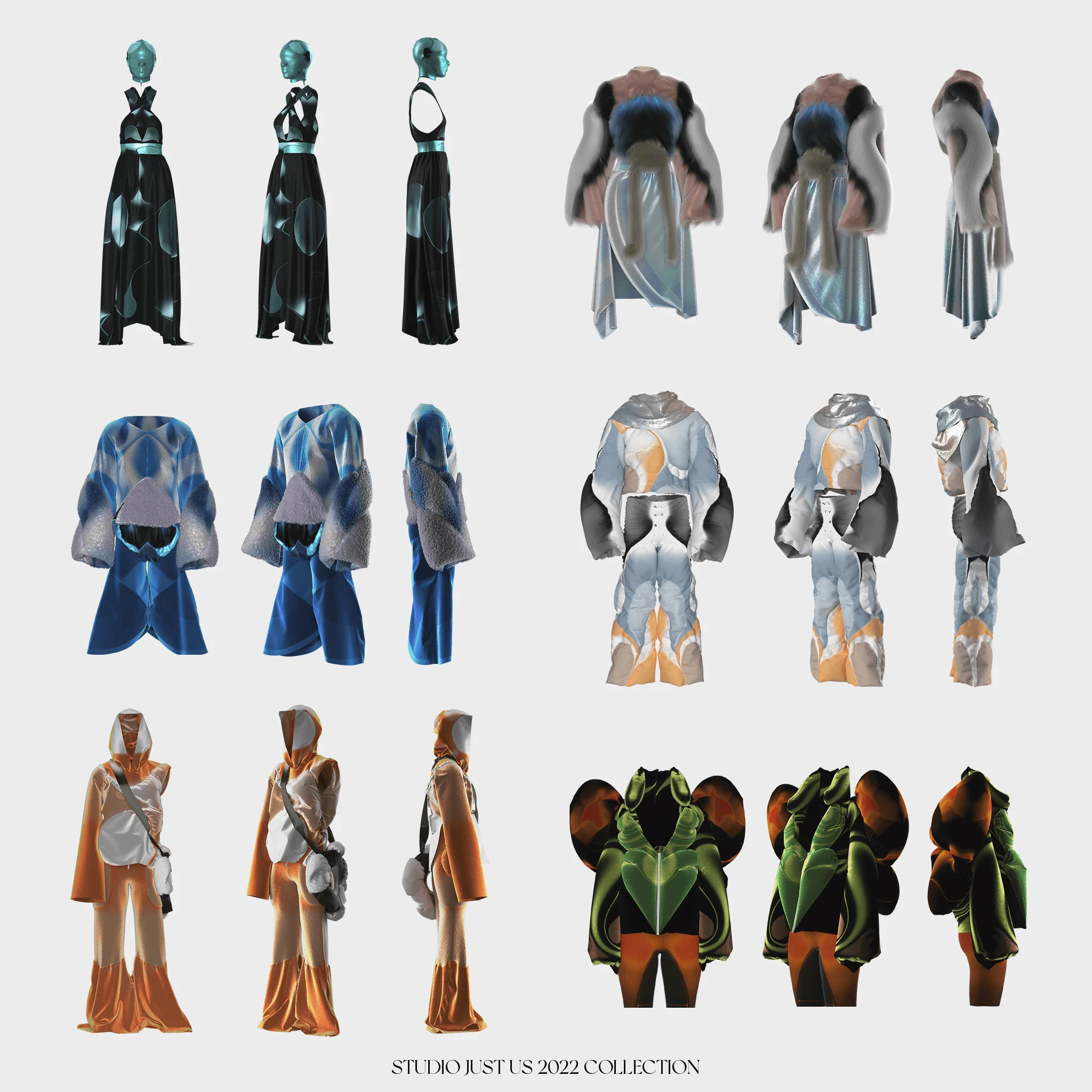
I’ve often scanned plants and objects found in nature to use as a texture on a garment—I try to have a feeling of flow and fluidity in my work.
Calvyn’s work builds extreme shapes around the body using a palette of colors and textures directly drawn from nature. Butterflies and sand dunes show through in beautifully rendered patterns, and padded fabric hangs like life rafts on his nomadic models as they walk through the serene desert landscape. Key to this work specifically is “organic natural feeling”—“working in 3D I’ve often scanned plants and objects found in nature to use as a texture on a garment, another possibility that digital design provides. I try to have a feeling of flow and fluidity in my work, as well as a nod to my past as an Olympic athlete, bringing an element of sportswear intertwined with an elevated and sophisticated style.”
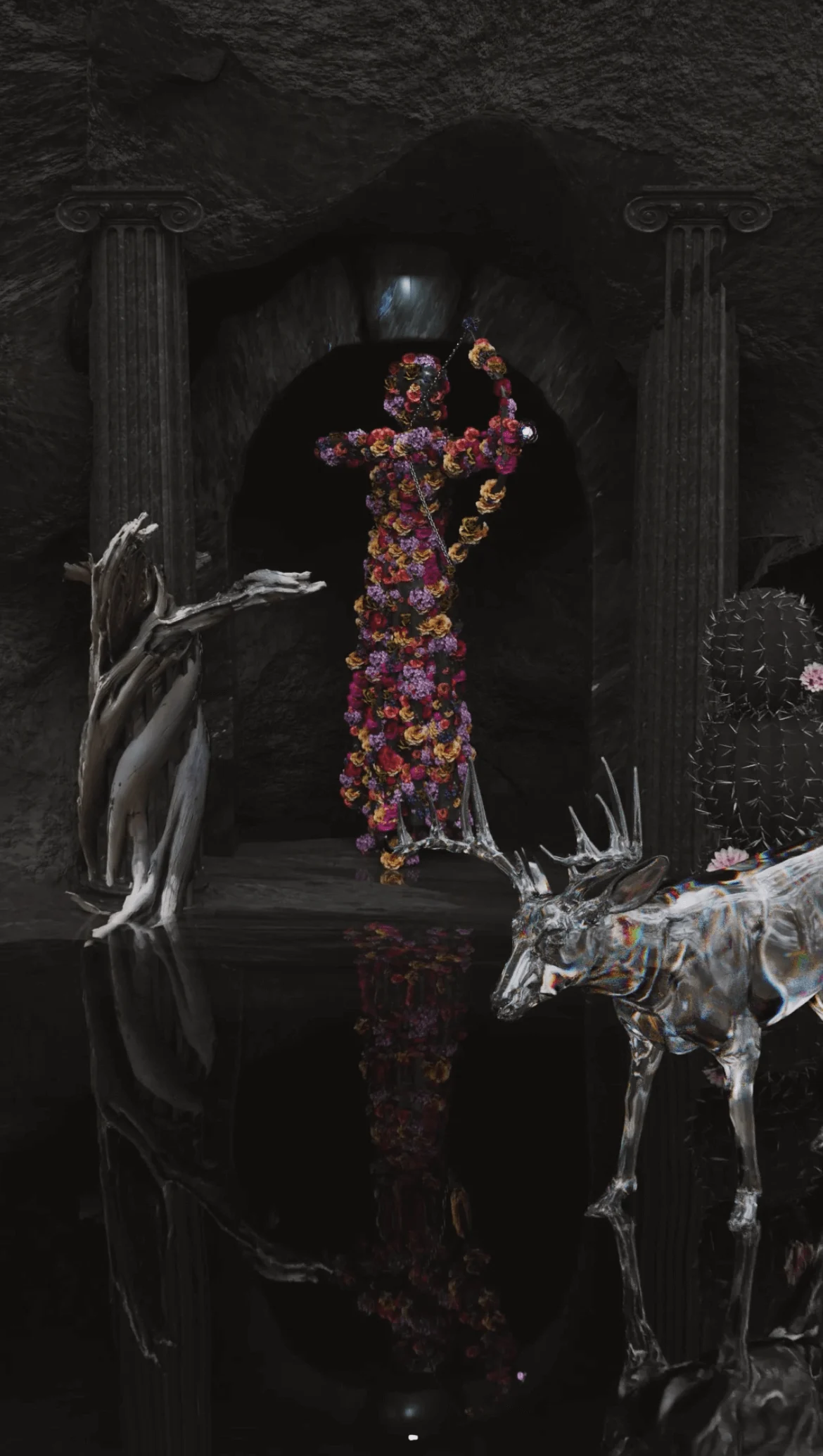
GLITCHOFMIND, Dominican Republic
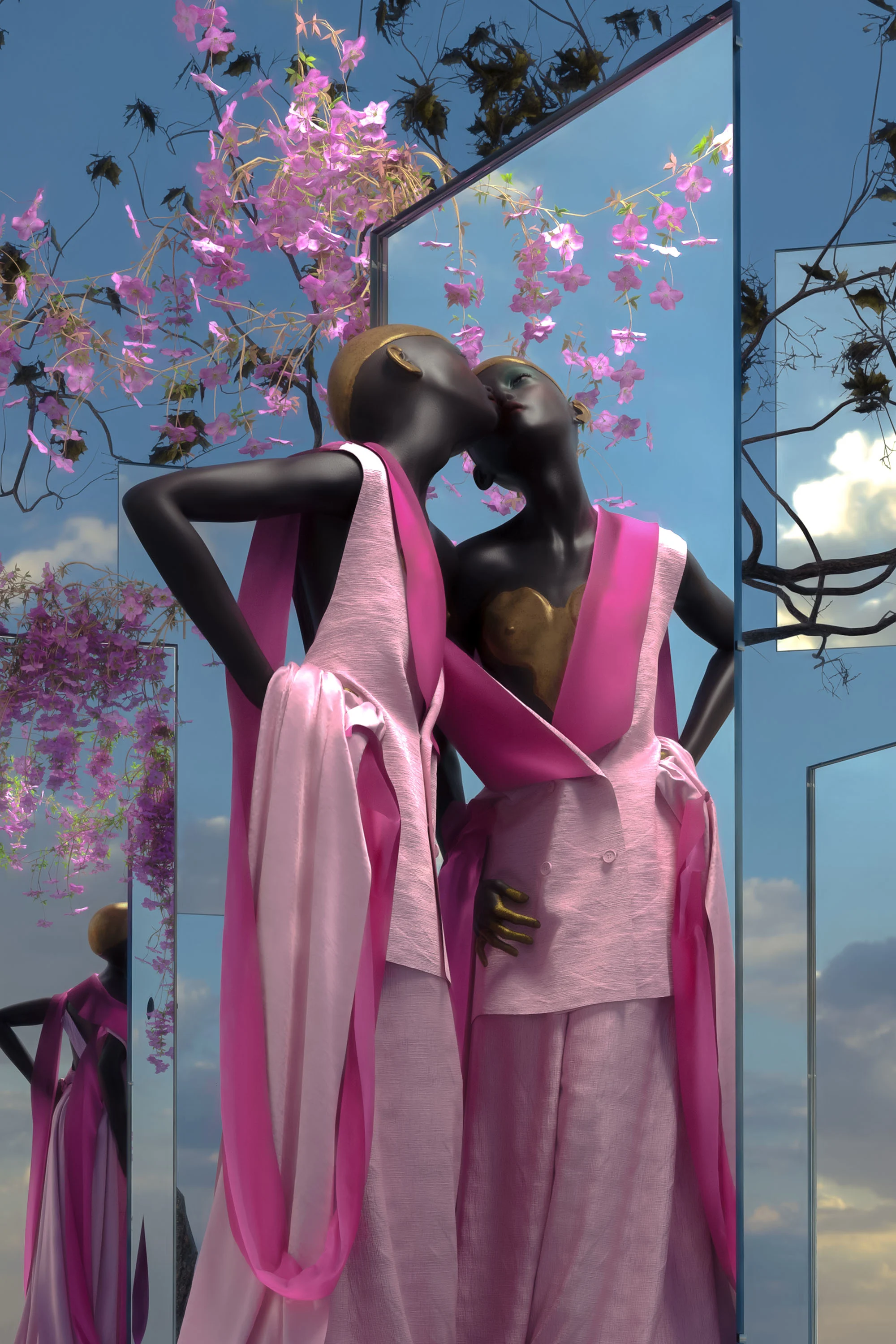
Going with my grandma to the countryside in Santo Domingo in the Dominican Republic, I felt limitless.
After eight years as a photographer, visual artist GLITCHOFMIND decided to experiment with blending 3D art and animation into his work. What resulted is a celebration of storytelling; highly intricate maximalist images featuring fashion that speaks to his identity as a Black, queer Latino creator. With an emphasis on surrealism, GLITCHOFMIND’s experience as a photographer equipped him with a wide net of references, from Tim Walker’s fantastical portraits, to the shapes and angles of experimental architecture.
In his piece “DISSOCIATIVE (wonder),” GLITCHOFMIND chose to explore dissociative feelings with his surroundings. “The little glass sphere represents the character’s inner world, filled with butterflies which are a symbol of dreams, imagination and transformation.” In the second, “May I Bloom,” the emotion was freedom. “Going with my grandma to the countryside in Santo Domingo in the Dominican Republic, where I come from, I felt limitless.” Finally, “Vanity Kane” is an artwork about exploring “how self-love can sometimes intertwine with what society considers to be vanity.” Created to celebrate Pride, it was initially exhibited at the 0X Society—one of the first NFT galleries in Montreal.
